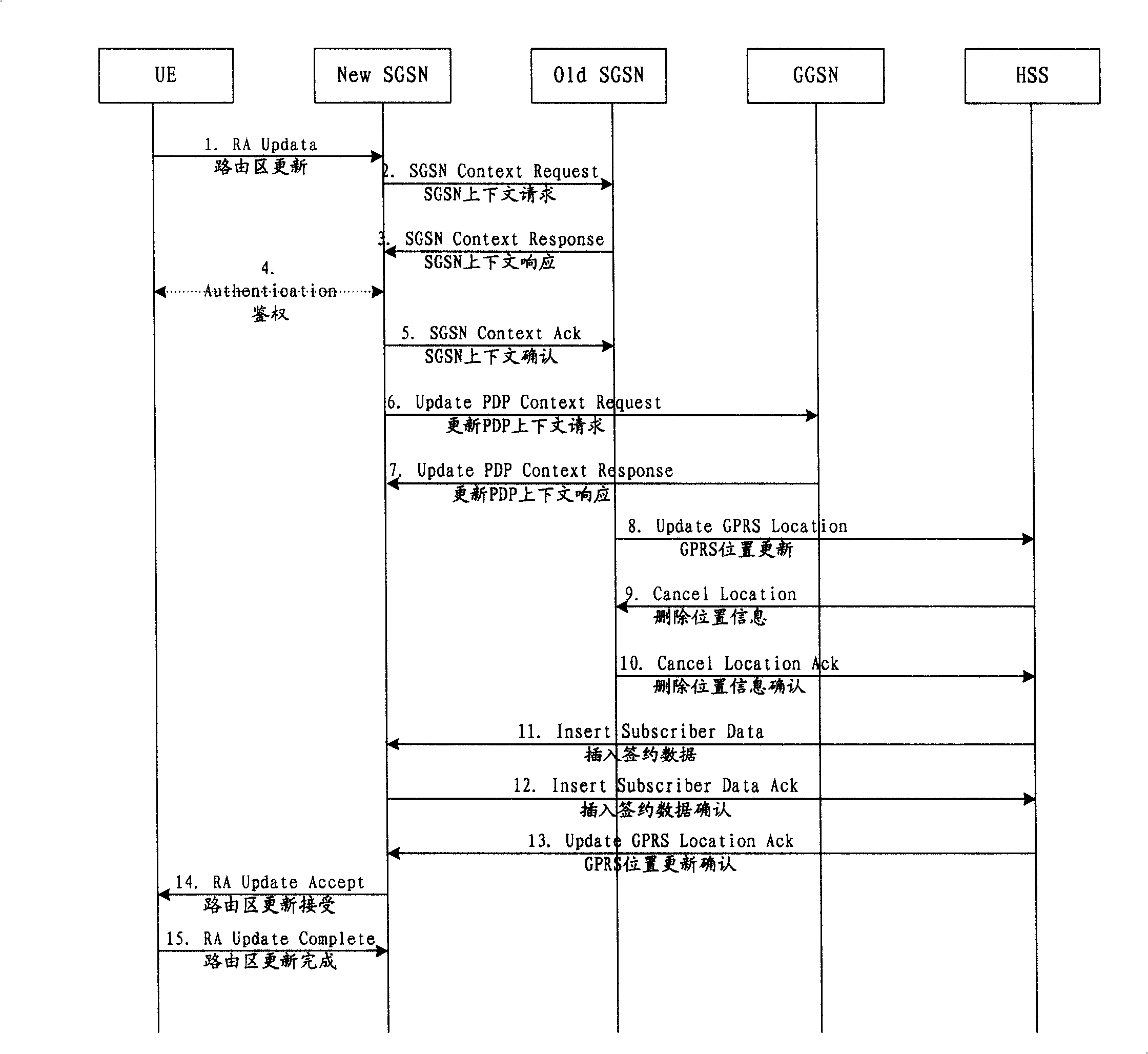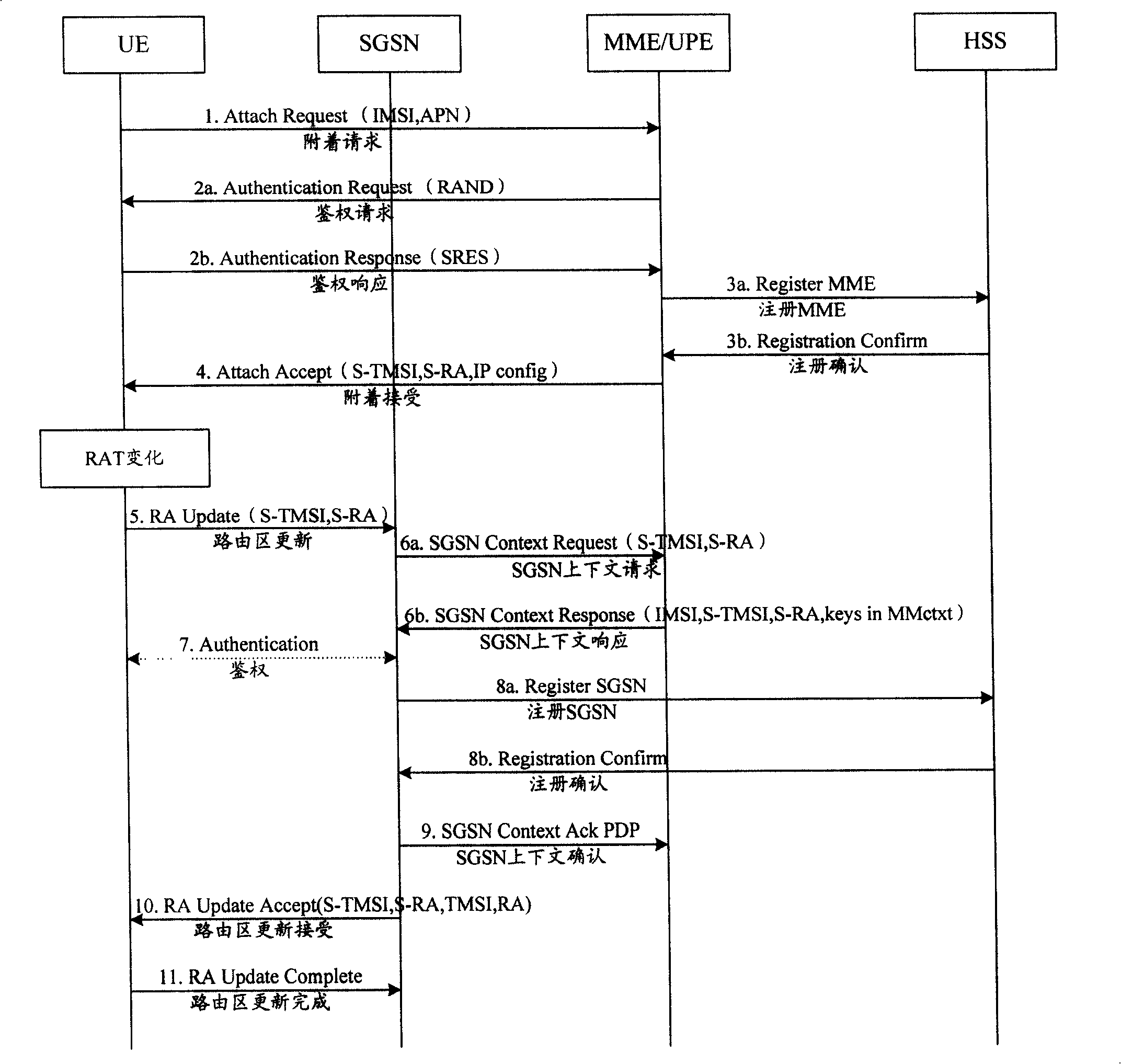Method and device for multi-module terminal registering in heterogeneous network
A multi-mode terminal, heterogeneous network technology, applied in the direction of selection device, network data management, wireless network protocol, etc., can solve the problems of waste of signaling, response, and terminal-related information cannot be deleted in time, so as to save signaling effect of overhead
- Summary
- Abstract
- Description
- Claims
- Application Information
AI Technical Summary
Problems solved by technology
Method used
Image
Examples
Embodiment 1
[0097] This embodiment describes the process of a dual-mode terminal (hereinafter referred to as the terminal) first attaching to the 2G / 3G system and then moving to the SAE / LTE system, and the process of first attaching to the SAE / LTE system and then moving to the 2G / 3G system. The HSS realizes the parallel registration of the terminal on the dual networks according to the instruction to deregister the heterogeneous network entity (Digister Inhomogenous NetworkEntity).
[0098] see Figure 5 , which is a schematic flow diagram of the dual-mode terminal first attaching to the 2G / 3G system and then moving to the SAE / LTE system according to the embodiment of the present invention. The specific steps include:
[0099] 1. The terminal initiates an attach request to the SGSN, and carries the IMSI in the Attach Request message;
[0100] 2a-2b. If the ID brought by the terminal is not an IMSI, the new SGSN requests the IMSI from the old SGSN;
[0101] 3a-3b. If the new SGSN fails t...
Embodiment 2
[0137] This embodiment describes the process of the terminal first attaching to the 2G / 3G system and then moving to the SAE / LTE system, and the process of first attaching to the SAE / LTE system and then moving to the 2G / 3G system. , to realize the parallel registration of the terminal on the dual network.
[0138] In this embodiment, the dual-mode terminal first attaches to the 2G / 3G system and then moves to the SAE / LTE system. Figure 5 The flow shown is similar, except that the indication information carried in the location update message is an update type identifier. Specific process and Figure 5 Similar as shown, the different steps are:
[0139] In steps 5a-5h, the new SGSN sends a registration message to the HSS, carries the update type identifier in the registration message, and sets the update type as attach; after receiving the message, the HSS triggers the old SGSN according to the indication that the update type is attach and old MME delete the information of the...
Embodiment 3
[0150] This embodiment describes the process of the terminal first attaching to the 2G / 3G system and then moving to the SAE / LTE system, and the process of first attaching to the SAE / LTE system and then moving to the 2G / 3G system, the HSS registers the network element address as needed , to realize the parallel registration of the terminal on the dual network.
[0151] In this embodiment, the dual-mode terminal first attaches to the 2G / 3G system and then moves to the SAE / LTE system. Figure 5 The flow shown is similar, except that the indication information carried in the location update message is the address of the network element that needs to be registered. Specific process and Figure 5 The flow shown is similar, the different steps are:
[0152] In steps 5a-5h, the new SGSN sends a registration message to the HSS, carries the address of the network element to be registered in the registration message, and sets this address as the address of the new SGSN; after the HSS r...
PUM
 Login to View More
Login to View More Abstract
Description
Claims
Application Information
 Login to View More
Login to View More - R&D
- Intellectual Property
- Life Sciences
- Materials
- Tech Scout
- Unparalleled Data Quality
- Higher Quality Content
- 60% Fewer Hallucinations
Browse by: Latest US Patents, China's latest patents, Technical Efficacy Thesaurus, Application Domain, Technology Topic, Popular Technical Reports.
© 2025 PatSnap. All rights reserved.Legal|Privacy policy|Modern Slavery Act Transparency Statement|Sitemap|About US| Contact US: help@patsnap.com



